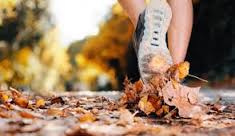What is Stride and Gait?
Though we often take thousands of steps a day in order to get closer to our destination, an abnormal gait (or, the pattern of how a person walks) can either move us closer to health or dysfunction.
Some causes of abnormal gait include, arthritis, fractures, shin splints, inadequate shoes, tendonitis, as well as a discrepancy in leg length. However, a poor gait can also cause many of these problems as well.
Two vital joint movements during gait are “pronation” and “supination.” Pronation is the movement that allows our foot to absorb shock by “flattening out,” usually while we put our weight onto that foot during a step. Supination involves the opposite – the creation of an arch in the foot to produce force and drive us forward from one foot onto the other. If your foot does not allow controlled pronation or supination, you are at risk for some of the problems noted above.
Let’s look at some ways to identify proper gait, and some strategies to ensure you are headed somewhere healthy!
PROPER WALKING MECHANICS
The principle of a proper walking stride requires good posture and purposeful movements. Follow these steps for proper posture:
- Hold your head high, chin parallel to the ground.
- Look forward, not at the ground (safety permitting).
- Allow your shoulders to move naturally, not tensed.
- Keep a tall spine.
- Swing your arms freely and symmetrically with a slight bend in your elbows.
- Keep your hips level with one another while striding, don’t hike or drop your hips in order to stride.
- Smoothly place one foot in front of another, rolling your foot from heel to toe.
- Try to avoid “slamming” your heels down, but instead walk gently and softly.
ABNORMAL GAIT CAN BE GOOD
Sometimes, we need to intentionally alter our gait momentarily for various reasons, including safety. An example of this is walking across a slippery surface. To safely navigate a slippery floor, keep the following rules in mind:
- Point your feet out slightly.
- Walk flat-footed, and take small slow steps.
- Extend your arms to your sides for balance; keep your hands out of your pockets.
- Use proper footwear (non-slip rubber or grooved neoprene soles are best).
NORMAL PRONATION (NEUTRAL)
Definition: This is usually the ideal, static alignment. In neutral pronation, weight distributes fairly evenly among all of the toes with a slight emphasis on the big toe and second toe, which are better adapted to handle more of the load. Normal pronators usually do best with a stability shoe.
Maintenance: Over time, foot alignment can change due to age, weight gain, and high impact activities. Over-pronation can develop, but supporting and strengthening your feet properly can help prevent this.
OVER PRONATION
Definition: Excessive inward roll (flattening) of the foot as it accepts the body weight. The foot continues to roll when it should be pushing off. This twists the foot, shin, and knee and can cause pain in these areas. Knock knees, flat feet, and weak abdominals contribute to over pronation.
Remedies: Wear shoes with straight or semi-curved lasts (shape of the shoe’s sole viewed from underneath). Motion-control or stability shoes with firm, dense midsoles and features that limit pronation are best. Over-the-counter orthotics or arch supports can help, too. Over pronation causes extra stress and tightness to the muscles of the foot and ankle, so do some extra stretching of the calf and Achilles tendon, and strengthening of the foot muscles.
Common Injuries:
- Plantar Fasciitis
- Shin splints
- Tarsal Tunnel Syndrome
- Bunions
UNDER PRONATION (SUPINATION)
Definition: Insufficient inward roll of the foot after landing. High arches and tight Achilles tendons and hamstrings can contribute to supination.
Remedies: Wear shoes with curved lasts to allow pronation. Neutral-cushioned shoes that encourage a more natural foot motion are best. Check for flexibility on the inner side of the shoe. Those with supination should do extra stretching for the calves, hamstrings, quads and iliotibial (IT) band.
Common Injuries:
- Iliotibial Band Syndrome
- Achilles tendinitis
- Plantar Fasciitis
- Ankle sprains
WHAT SHOE IS FOR YOU?
One way to check your own general foot type* is to perform a “wet test.” Get your bare feet damp (perhaps after a shower), and step on a dry area of the floor where you can see a footprint. Dark surfaces are preferable, or you can step on a piece of cardboard
Use the picture above to get an idea of which type of shoe would generally be good for your feet.

Subscribe To Our VIP Newsletter
Join our VIP mailing list to receive additional content that goes even deeper into the latest tips to ensure you and your families health, fitness and wellness.























